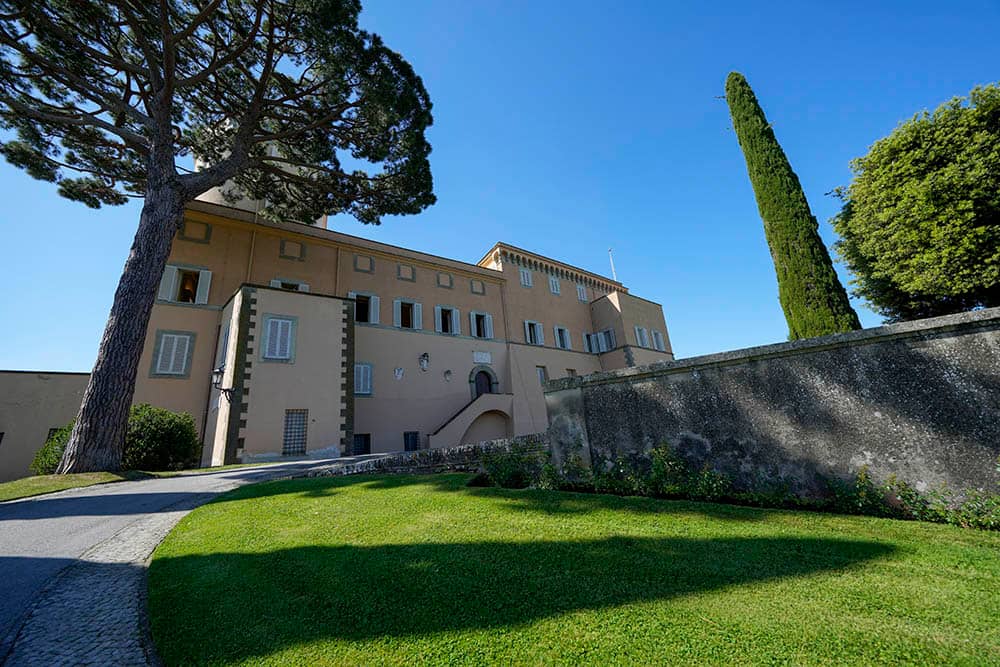ROME – For Americans, the big deal about yesterday is that it was July 4. (Cue the Bill Pullman speech from “Independence Day” here.) For Italians, perhaps especially Neapolitans, yesterday also was memorable for a small ceremony that took place in a cemetery in Naples.
There, at the cemetery of Holy Mary of Tears, connected to the nearby church of the same name, a small plaque was dedicated honoring Antonio Griffo Focas Flavio Angelo Ducas Comneno Porfirogenito Gagliardi de Curtis di Bisanzio – Italian noble families do love their titles and surnames, don’t they? – far better known as “Totò,” Italy’s answer to Charlie Chaplin and perhaps one of the greatest comedic actors who ever lived.
Adopted into a noble Neapolitan family as a young man, Totò gravitated towards the theater. In standard histories of the cinema, Totò is classified along with Chaplin, the Marx Brothers and Buster Keaton as the prototypical “movie star” of the early decades of the film industry. He also wrote a fair amount of poetry, and later in life, established himself as a dramatic actor too with more serious roles.
When Totò died in 1967, three separate funerals had to be held in order to accommodate the vast crowds that wanted to turn out. At the third, held at Naples’ Basilica of Holy Mary of Sanctity, some 250,000 people alone packed the square and streets outside.
Produced by Italian sculptor Ignazio Colagrossi and executed in bronze, the new image depicts the actor peering into his own grave wearing his trademark bowler hat, along with several lines of his poetry. The ceremony was led by a local pastor, who offered a blessing of the sculpture.
Italians who grew up on Totò’s films – there were 97 of them over his prodigious career, before he died in 1967 – probably would be surprised there wasn’t such a memorial until now. For people outside the peninsula, this may seem merely a development of local interest, quaint but mostly irrelevant.
Yet, as ever in Italy, there’s more to the story.
Here’s the thing: Totò is buried in a Catholic cemetery, and the new sculpture in his honor has been blessed by a Catholic priest. During his life, however, Totò had a contentious relationship with the Church, and he was often excoriated by ecclesiastical authorities as a public sinner.
The reason, as is often the case, was his marriage situation.
In 1929, a young Totò met a woman by the name of Liliana Castagnola, a well-known singer who kept company with the who’s who of Europe of the day. When Totò broke off the relationship in 1930, Castagnola killed herself in despair by ingesting an entire tube of sleeping pills. (She’s now actually buried in the same crypt with Totò.)
Perhaps driven by the shock of her death, Totò quickly entered into a relationship with another woman, Diana Bandini Lucchesini Rogliani, in 1931, who was 16 at the time. The two married in 1935, after she’d given birth to a daughter whom Totò decided to name “Liliana” after his first love.
By 1936, Totò wanted out of the marriage and obtained a civil annulment in Hungary, since they were difficult to get in Italy at the time. In 1939 an Italian court recognized the Hungarian divorce decree, effectively ending the marriage as far as the Italian state was concerned.
In 1952, Totò met an actress named Franca Faldini, who was only two years older than his own daughter, and who would become his companion for the rest of his life. Because the Catholic Church had never signed off on the dissolution of Totò’s first marriage, the two were often referred to as “public concubines” and held up as examples of declining moral standards. (This, of course, was in a pre-Amoris Laetitia age, when there was no path to reconciliation for someone in such a situation.)
A popular rumor held that Totò and Faldini arranged a “fake marriage” in Switzerland in 1954, though she went to her grave in 2016 denying it. Faldini insisted that she and Totò simply didn’t feel the need for a contract to cement their relationship.
The sense of exile from the Church apparently was painful for Totò, who, by his daughter’s account, had a genuine Catholic faith. Two of his films depict him chatting with St. Anthony, and Liliana De Curtis says he actually carried on such conversations with Anthony and other saints at home in private.
“He prayed at home because it wasn’t easy for him to go to church with his family as he would have wanted, with recollection and seriousness,” she said, referring in part to the mob scene his presence would have created, but also to the fact that he likely would have been denied communion should he have presented himself.
According to De Curtis, Totò always carried a copy of the gospels and a wooden rosary wherever he went, and he took an active interest in caring for needy neighbors – among other things, frequently dropping in on a nearby orphanage to bring toys to the children during his later years. When he died, his body was laid to rest with a cluster of flowers and an image of his beloved St. Anthony of Padua in his hands.
De Curtis said that during the Jubilee of Artists in 2000, she donated Totò’s rosary to Cardinal Crescenzio Sepe of Naples, who celebrated a Mass in memory of the actor and his family.
To sum up, we’re talking about a pop star kept at arm’s length by the Church during life, but who now is spending eternity in the Church’s embrace, accompanied by an image in his honor blessed by the Church.
Among other things, it’s a reminder of the healing power of time – which might, perhaps, invite a bit of perspective as we contemplate our oft-heated reactions to the controversies and perceived villains of today.
Follow John Allen on Twitter at @JohnLAllenJr.















